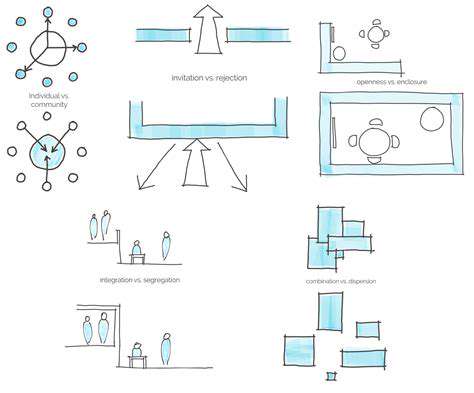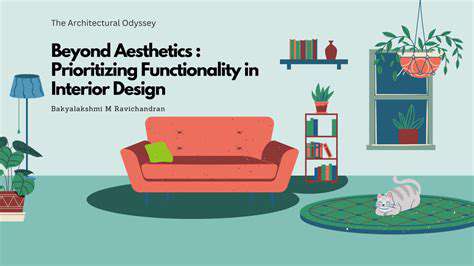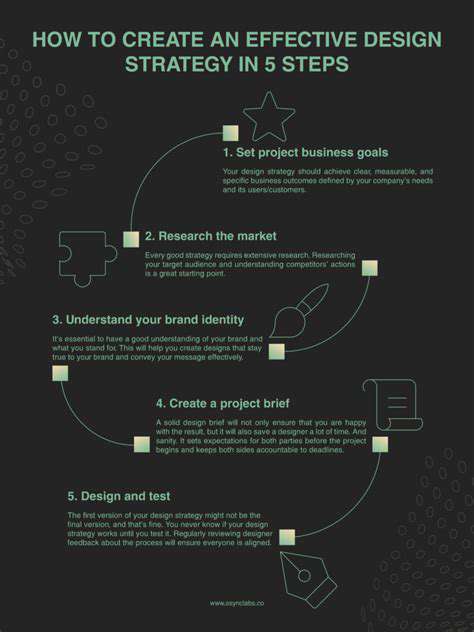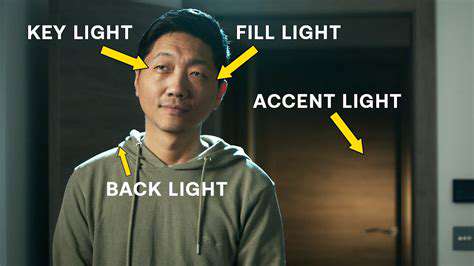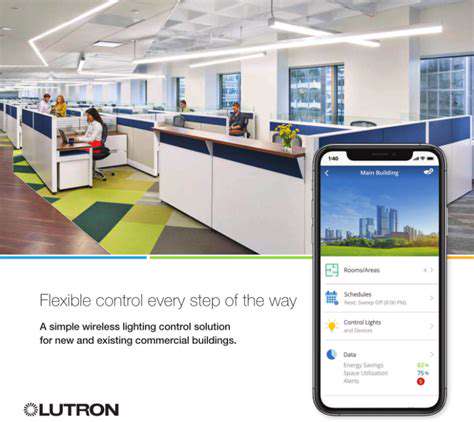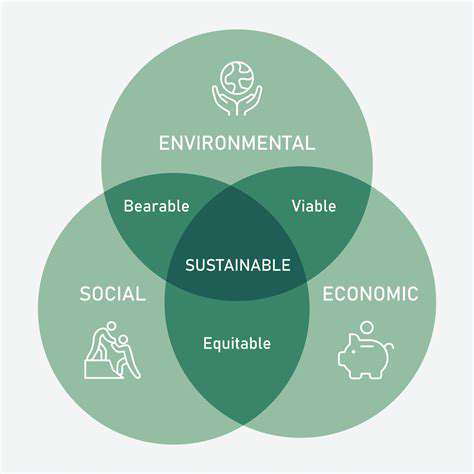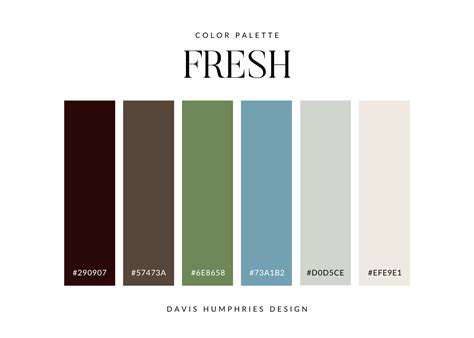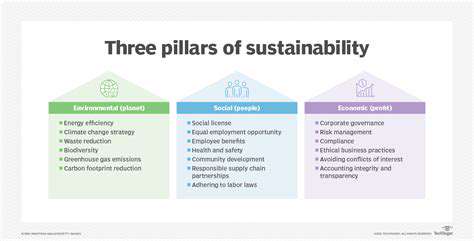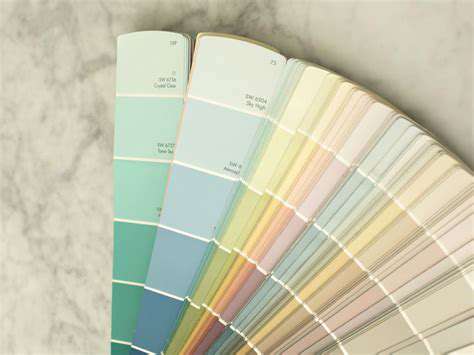Innovative Home Planning with Full Package, Color Palette Design, and Space Optimization
Decluttering for Space Liberation
True spatial efficiency begins with thoughtful editing of possessions. Many homeowners discover they're using only 20% of their stored items regularly. Professional organizers recommend the one year rule - if you haven't used something in twelve months, it's likely safe to part with it. This process creates physical and mental breathing room, transforming cramped areas into functional spaces.
The psychological benefits of decluttering are well-documented. Clear surfaces and organized storage reduce decision fatigue and make daily routines more efficient. Many find that maintaining designated zones for specific categories (like a single drawer for office supplies) prevents future accumulation.
Strategic Furniture Placement for Flow
Thoughtful arrangement can make a small room feel expansive. Leave at least 36 inches for main walkways and consider the breathing space around each piece. Floating furniture away from walls often creates better conversation areas than pushing everything against perimeter walls. Multi-functional pieces like storage ottomans or nesting tables offer flexibility for different occasions.
Vertical Space Solutions for Storage
Walls represent untapped real estate in most homes. Floor-to-ceiling shelving systems not only store books and decor but can incorporate closed cabinets for less attractive necessities. In kitchens, magnetic strips for knives or hanging pot racks free up valuable drawer and cabinet space. Even doors can host organizers for shoes, jewelry, or cleaning supplies.
Innovative Storage Solutions for Hidden Treasures
Custom solutions often provide the most efficient storage. Under-stair drawers, window seat compartments, or toe-kick drawers in kitchens utilize typically wasted space. For renters, freestanding modular systems offer similar benefits without permanent modifications. The goal is creating storage that's both accessible and invisible in daily life.
Lighting Design to Create Spatial Illusions
Proper illumination can make ceilings appear higher and rooms feel larger. Layered lighting - combining ambient, task, and accent sources - creates depth and dimension. Strategically placed mirrors double both light and the perception of space. In windowless areas, daylight-spectrum bulbs provide the energizing effects of natural light.
A Comprehensive Home Planning Approach: Beyond the Basics

Choosing the Right App for Your Needs
With countless home design applications available, selection depends on your project's complexity and your technical comfort. Beginners might prefer intuitive drag-and-drop interfaces, while professionals may require advanced CAD-like precision. Many find that starting with free versions allows testing before committing to premium features. Cross-platform compatibility ensures you can work across devices as inspiration strikes.
Creating Detailed Floor Plans
Accurate spatial representation prevents costly mistakes. Modern apps allow inputting exact measurements and even account for structural elements like load-bearing walls. Some incorporate augmented reality to visualize plans in your actual space. These tools help identify potential issues like furniture that might block natural pathways before implementation.
Visualizing Design Concepts
Seeing is believing when it comes to design choices. Advanced rendering technologies now show realistic material textures and lighting conditions. Many apps offer extensive libraries of real products from major retailers, allowing you to experiment with actual items you might purchase. This prevents the common disappointment when something looks different in reality than in imagination.
Managing Materials and Budgets
Cost tracking separates dream projects from achievable ones. The most effective tools link your design elements directly to purchase options and pricing, automatically updating totals as you make changes. Some even suggest alternative materials when you exceed budget thresholds. This real-time feedback prevents unpleasant surprises during implementation.
Collaboration and Communication
Home projects typically involve multiple stakeholders. Cloud-based platforms allow real-time sharing with family members or contractors. Version control ensures everyone works from the latest plans, while commenting features facilitate clear communication. Some apps even generate professional-looking presentations for contractor bids or HOA approvals.
The Importance of Functionality Meets Aesthetics: Designing for Every Need
Designing for Real-Life Use
Successful interiors balance beauty with practicality. High-traffic areas demand durable, easy-clean surfaces regardless of style preferences. The working triangle concept in kitchens demonstrates how ergonomic layouts improve daily functionality. Smart storage solutions maintain aesthetic appeal while keeping essentials within reach but out of sight.
Prioritizing Human-Centered Design
Comfort should never be sacrificed for appearance. Chair heights, counter depths, and even light switch placement should accommodate the users' physical needs. Universal design principles benefit all ages and abilities, creating spaces that are both stylish and inclusive. These considerations often add long-term value beyond immediate visual appeal.
Material Selection for Longevity
Quality materials tell their own design story through natural variations and patinas that develop over time. While trends come and go, honest materials like solid wood, natural stone, and pure metals age gracefully. Sustainable choices satisfy both environmental concerns and design sensibilities, creating spaces that feel responsible and refined.
Technology Integration Done Right
Modern homes increasingly incorporate smart features, but these should enhance rather than dominate the design. Concealed wiring, discreet control panels, and minimalist interfaces maintain clean aesthetics. The best integrations feel intuitive rather than technical - like motion-activated pantry lights or humidity-sensing bathroom fans.
Timeless Over Trendy
While fashionable elements have their place, foundational pieces should transcend temporary styles. Neutral backdrops allow for easy updates through accessories and soft furnishings. Investing in quality classic furniture ensures years of service, while trendier pieces can be rotated seasonally without major expense.
The Full Package Experience: Seamless Integration and Professional Guidance
Tailored Implementation Strategies
Our comprehensive service begins with understanding your unique circumstances and goals. We analyze your existing workflows to identify the most efficient adoption path. Customized training addresses specific user roles and learning styles, ensuring comfortable proficiency across your team. This phased approach prevents overwhelm while delivering measurable progress.
Ongoing Optimization Support
Our relationship continues well beyond initial setup. Quarterly check-ins assess usage patterns and identify untapped features that could benefit your operations. We provide refresher training as teams evolve and new features launch. This proactive support model helps you continuously extract maximum value from your investment.
Community of Practice
Clients gain access to an exclusive network of peers facing similar challenges. Regular knowledge-sharing sessions and case study presentations provide real-world insights. Our moderated forums allow crowdsourcing solutions while maintaining professional standards. This collaborative environment accelerates learning and innovation beyond what any single organization could achieve independently.

